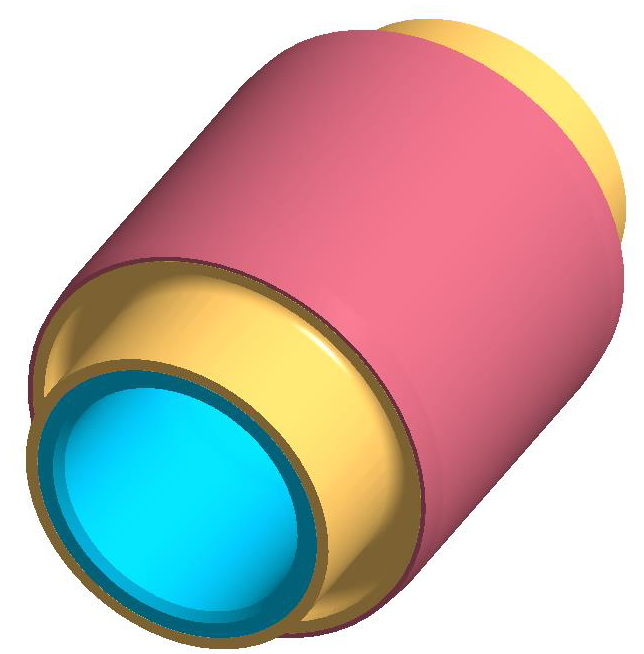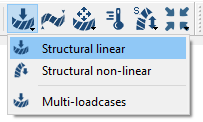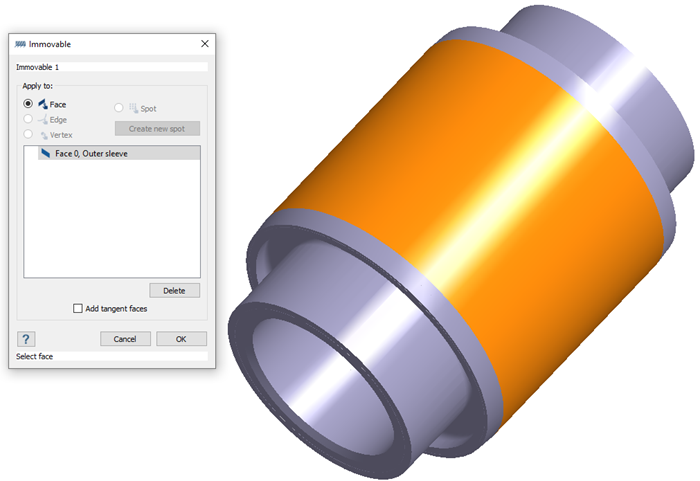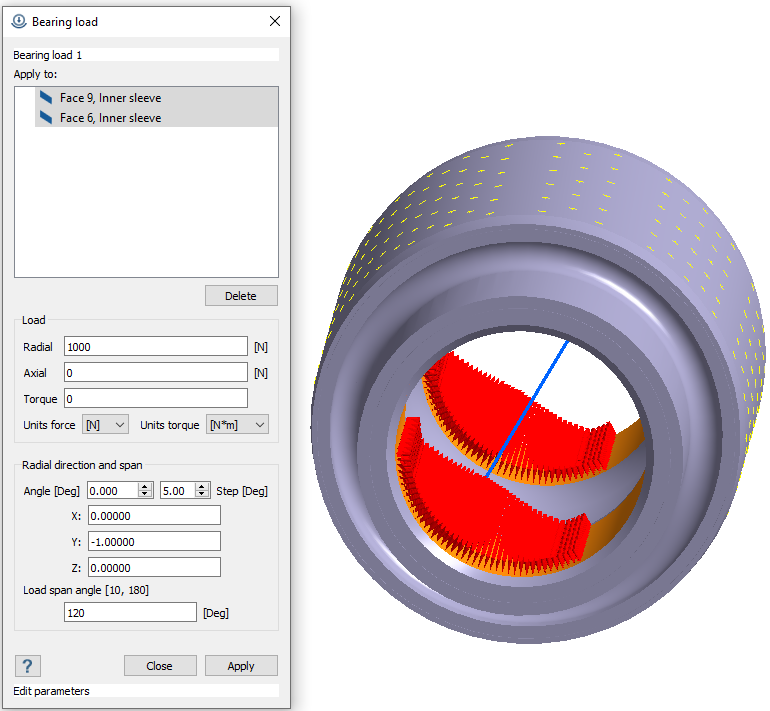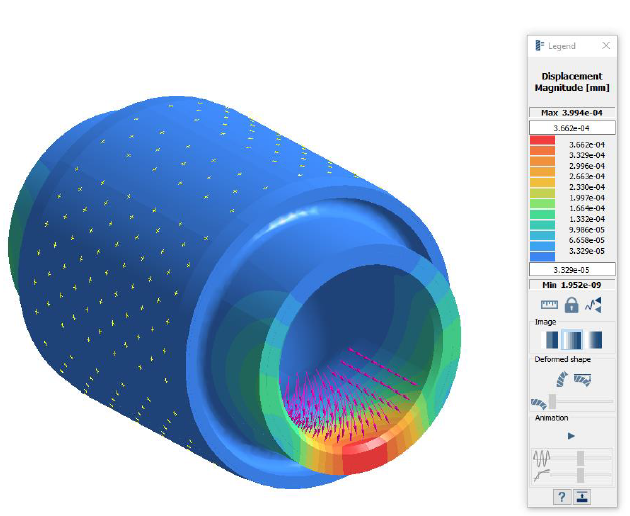SS-T: 3020 Bearing Loads
Create bearing loads in SimSolid.
- Purpose
- SimSolid performs meshless structural
analysis that works on full featured parts and assemblies, is tolerant of
geometric imperfections, and runs in seconds to minutes. In this tutorial,
you will do the following:
- Learn how to create bearing loads in SimSolid.
- Model Description
- The following model file is needed for this tutorial:
- BearingLoad.ssp
Open Project
Create Structural Linear Analysis
Create Immovable Support
Apply Bearing Load
Run Analysis
- In the Project Tree, open the Analysis Workbench.
-
Click
 (Solve).
(Solve).
